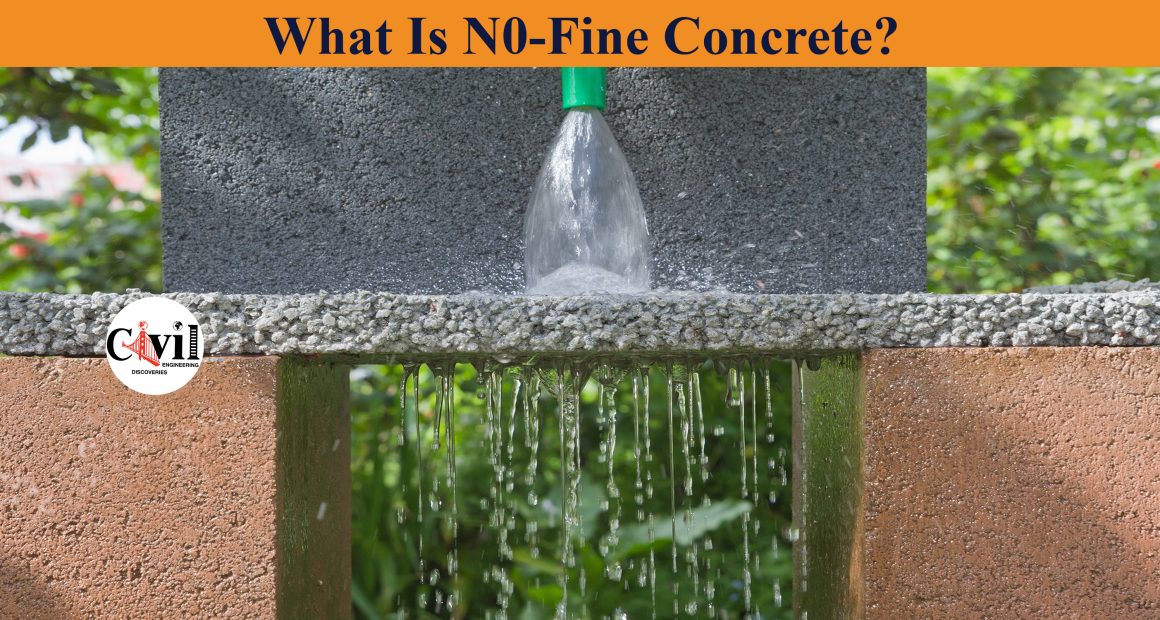As the name suggests by itself, no-fines concrete does not contain any fine aggregates. This concrete is produced by eliminating fine aggregates from plain concrete. Only cement, coarse aggregate, and water are used. The coarse aggregate particles are surrounded by a thin cement paste coating.
Naturally, the concrete contains a large number of voids which makes the concrete lightweight and reduces its overall strength. The compressive strength of no-fines concrete is very low and depends on the water-cement ratio, cement content, and aggregate grades.
No fines concrete is gaining its popularity day by day due to its various advantages over conventional concrete, which are as follows:
Advantages Of No-Fine Concrete
The density of no-fines concrete is very low.
No fines concrete does not segregate and the capillary movement of water is almost nil.
It has better thermal insulating characters due to the presence of large voids.
This concrete can be used by dropping from a permissible height.
Shrinkage is also lower than normal concrete.
It is lightweight.
The formwork can be removed earlier.
No mechanical vibrator is required for compacting no fines concrete, simple rodding method is sufficient for full compaction.
It gives better and attractive appearances.
Production cost is comparatively lower than other conventional concrete because lower cement content is used.
Disadvantages Of No-Fine Concrete
The strength of no-fines concrete is lower than ordinary concrete.
No-fines concrete can not be used in the reinforced concrete structures.
The consistency of no-fines concrete can not be measured by any available standard methods such as slump test, compacting factor test, etc.
Uses Of No-Fine Concrete
As we said earlier this concrete is not suitable for use in the reinforced concrete structures. However, the walls made of no-fines concrete can be used in cold countries because of their good thermal insulating characteristics.






